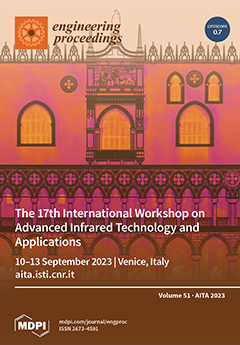Open AccessProceeding Paper
Alzheimer Disease Detection from Raman Spectroscopy of the Cerebrospinal Fluid via Topological Machine Learning
by
Francesco Conti, Martina Banchelli, Valentina Bessi, Cristina Cecchi, Fabrizio Chiti, Sara Colantonio, Cristiano D’Andrea, Marella de Angelis, Davide Moroni, Benedetta Nacmias, Maria Antonietta Pascali, Sandro Sorbi and Paolo Matteini
Viewed by 540
Abstract
The cerebrospinal fluid (CSF) of 19 subjects who received a clinical diagnosis of Alzheimer’s disease (AD) as well as of 5 pathological controls was collected and analyzed by Raman spectroscopy (RS). We investigated whether the raw and preprocessed Raman spectra could be used
[...] Read more.
The cerebrospinal fluid (CSF) of 19 subjects who received a clinical diagnosis of Alzheimer’s disease (AD) as well as of 5 pathological controls was collected and analyzed by Raman spectroscopy (RS). We investigated whether the raw and preprocessed Raman spectra could be used to distinguish AD from controls. First, we applied standard Machine Learning (ML) methods obtaining unsatisfactory results. Then, we applied ML to a set of topological descriptors extracted from raw spectra, achieving a very good classification accuracy (>87%). Although our results are preliminary, they indicate that RS and topological analysis may provide an effective combination to confirm or disprove a clinical diagnosis of AD. The next steps include enlarging the dataset of CSF samples to validate the proposed method better and, possibly, to investigate whether topological data analysis could support the characterization of AD subtypes.
Full article
►▼
Show Figures




